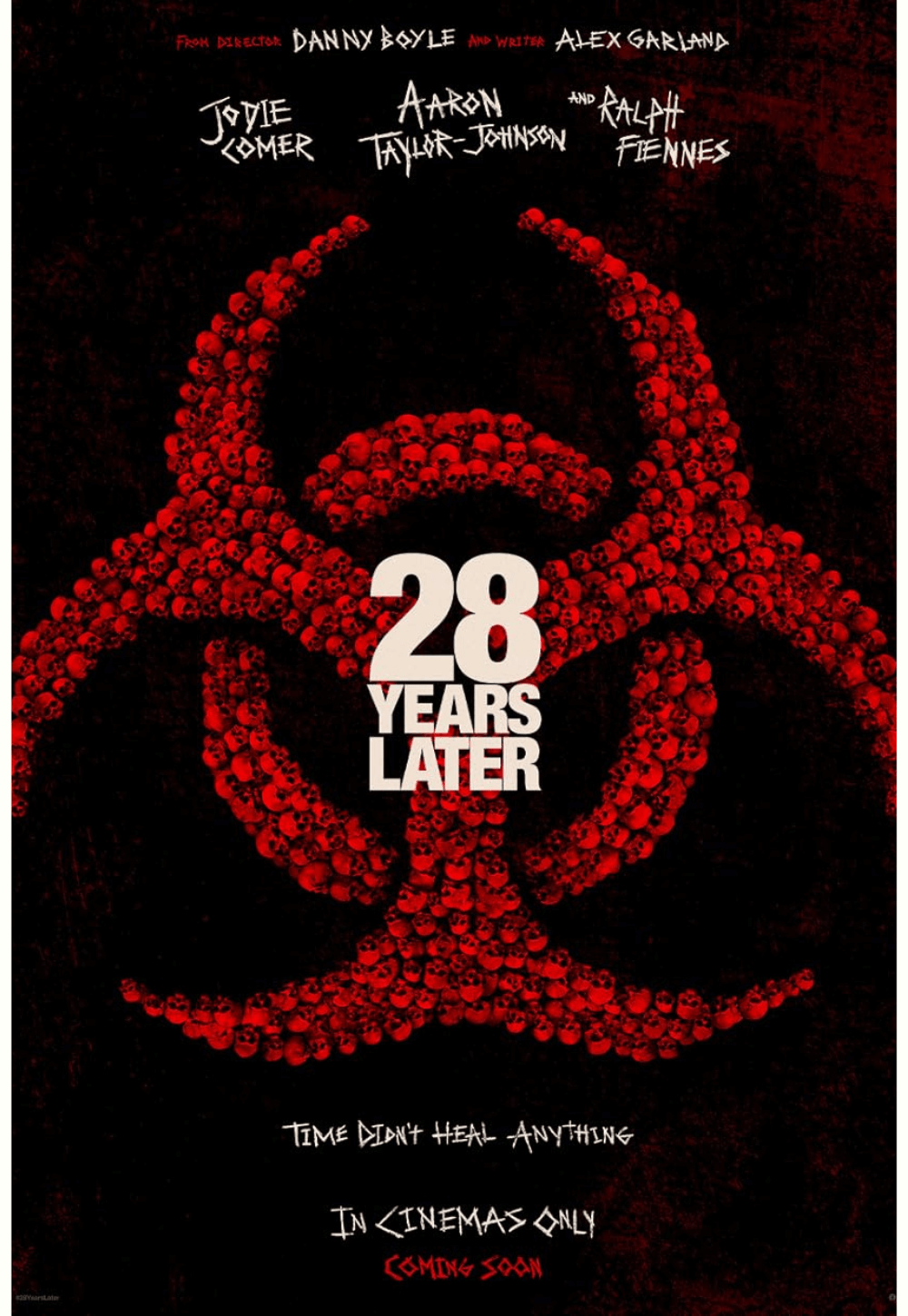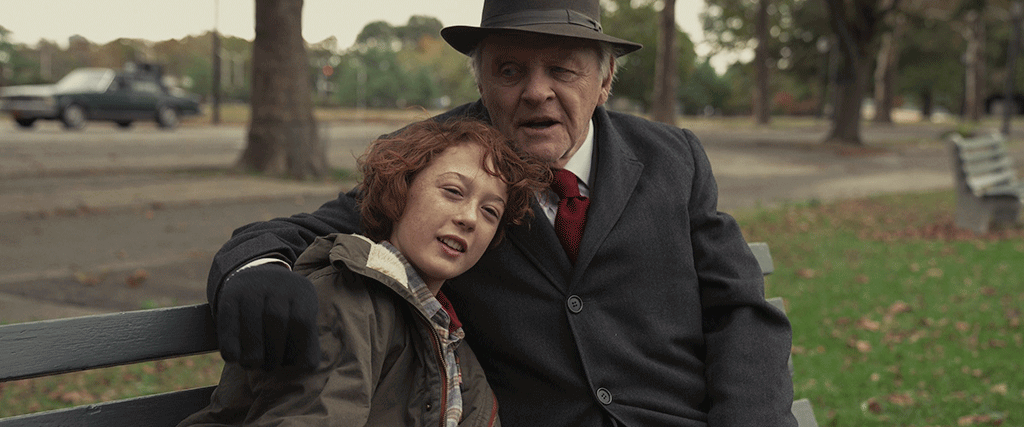
Zurich Film Festival Dispatch – Part 5
By David Hill | October 6, 2022
The 18th Zurich Film Festival runs from September 22 to October 2. Check here for the full lineup. Some films mentioned below will be reviewed separately in full-length writeups, but for now, here are some initial impressions. Check out Part 1, Part 2, Part 3, and Part 4.
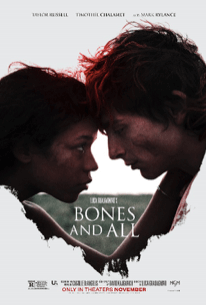 Bones and All
Bones and All
Gala Premieres
Luca Guadagnino’s Bones and All was easily one of my most anticipated screenings of this year’s ZFF. Not only am I a huge fan of the director’s two previous films, Call Me by Your Name and Suspiria, but Guadagnino also came to Zurich to present the film and to receive the A Tribute to… Award, with which the ZFF honors auteur filmmakers for their life’s work. Unfortunately, Bones and All did not fully live up to my high expectations, but it still made for a unique and memorable viewing experience.
Set in the United States during the 1980s and based on Camille DeAngelis’s 2015 novel of the same name, Bones and All starts with a young woman named Maren (Taylor Russell) sneaking out of her home to attend a sleepover party hosted by one of her friends from high school. Once at the party, Maren admires the nail polish her friend put on one of her fingers. This might sound like the premise of a generic teenage flick, but things take a dark turn when Maren suddenly pulls her friend’s finger towards her and chews it off. As anybody who has only paid half attention to the film’s marketing campaign already knows, Maren is a cannibal. Seeing her in action is still shocking as Guadagnino does not hold back on violence and gore during the handful of scenes depicting cannibalism. However, Bones and All is far from being a full-blown horror film; it feels quite grounded overall, and it is best described as a coming-of-age road movie with some horror elements sprinkled in.
When Maren runs home from the party and tells her father, Frank (André Holland), what happened, they start packing and hastily hit the road to flee from the police. Soon afterward, Frank abandons Maren and leaves behind a tape recording that Maren listens to throughout the film. Frank’s tape recording serves as an expository device that fills in Maren’s backstory, communicating to both Maren and the audience that Maren’s mother, whom she never got to know, is also a cannibal. Left to fend for herself, Maren decides to look for her mother in the hopes of finding answers as to how she should deal with her condition of being a cannibal. Along the way, she discovers that she and her mother are not the only cannibals out there. She first meets a cannibal called Sully (Mark Rylance in another weird performance following last year’s Don’t Look Up that did not work for me), who is rather creepy and who teaches her how to smell other cannibals. Later, she meets Lee (Timothée Chamalet), a fellow young cannibal who is a drifter and who also has a troubled family history. Lee helps Maren in her search for her mother, and the two become romantically involved.
Although it reminded me of Terrence Malick’s Badlands and Julia Ducournau’s Raw, Bones and All is a highly original film, and it is well directed by Guadagnino. Despite this, it never fully grabbed me in the way the director’s previous work has. On a pure surface level, I was not overly invested in the central romance. While Chamalet and especially Russell give great performances individually, their chemistry together was somewhat lacking. Intellectually, the film could have also offered more–it never explicitly addresses the potential metaphorical meaning of cannibalism, and I took it as standing rather generically for the experience of being an outsider. Ascribing a more specific meaning to the film’s depiction of cannibalism is made difficult by the fact that Maren and Lee’s actions have serious consequences for innocent people. In this regard, the film at least raises some interesting moral questions as Maren tries to navigate if and when she is justified to kill other people in order to satiate her hunger for human flesh. However, these questions are not treated in a particularly deep manner, and they ultimately feel more like an afterthought.
Despite these criticisms, Bones and All is a good film that is worth seeing for its originality, Guadagnino’s direction, and Russell’s star-making lead performance. The fact that it still feels like a disappointment says more about the greatness of Guadagnino’s previous work than anything else. 3/4 Stars
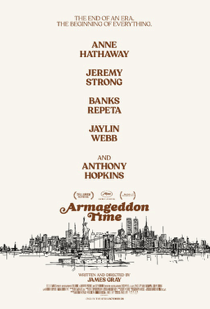 Armageddon Time
Armageddon Time
Gala Premieres
James Gray has been one of the most reliably consistent American directors of the last 15 years, but he has never fully received the attention and recognition he deserves. Perhaps this has to do with the fact that it is hard to pinpoint him given his varied body of work that covers crime thriller (We Own the Night), romantic drama (Two Lovers), period drama (The Immigrant), historical adventure (The Lost City of Z), and science fiction (Ad Astra). With his most recent film, Armageddon Time, Gray follows the trend of directors making films with autobiographical elements that are inspired by their childhoods. I must admit that I had started to feel a bit tired of this trend after having been underwhelmed by Paolo Sorrentino’s The Hand of God and, even more so, Kenneth Branagh’s Belfast last year. However, Gray thankfully delivers one of the finest examples of this kind of filmmaking with Armageddon Time, and my reservations were quickly brushed aside while watching it.
Set in 1980 in Queens, New York, Armageddon Time follows Gray’s 12-year-old stand-in, Paul Graff (Banks Repeta), who wants to become an artist. Paul lives with his parents, Esther (Anne Hathaway) and Irving (Jeremy Strong), as well as his older brother Ted (Ryan Sell). While Ted visits a prestigious and conservative private school associated with the Trump family, Paul goes to a public school, where he befriends his new African American classmate Johnny (Jaylin Webb). Paul and Johnny cause a lot of mischief together, such as abandoning their class during a school trip to the Guggenheim Museum or smoking weed in the bathroom of their school. But Paul quickly learns about the double standards used to judge according to race in America when Johnny gets punished much harder for the same transgressions than he does. This is juxtaposed with the fact that Paul’s family is Jewish, another group that has been subject to atrocious injustices and racism throughout history. Paul’s grandfather Aaron (Anthony Hopkins), who is very close to Paul and the only family member who is supportive of his wish to become an artist, tells him about the horrific things that happened to him and his family back in Europe when he was still a child, and he urges Paul to speak out whenever he witnesses racism–something that is easier said than done, especially for a 12-year-old boy.
As is already apparent from this plot synopsis, Armageddon Time has a rich subtext that deals with issues such as racism, white privilege, our relationship with the past, the inequitable distribution of wealth and opportunities, and the moral compromises that are required to achieve the American dream. The film has a lot to say about America–not only the America of the past but also the America of today. It is set around the time Ronald Reagan was elected President of the United States (which is seen by many as the beginning of today’s political and societal divisions in the country), and its title refers to the widespread fear of a nuclear war at the time (it is also the name of a song by Jamaican reggae musician Willie Williams that was covered by the English rock band The Clash).
However, the film’s rich subtext never overshadows the story Gray is telling, and Armageddon Time also works on a pure surface level as a highly engaging and entertaining coming-of-age story that is quite funny at times. This is in no small part thanks to a great lead performance by Banks Repeta, who is in practically every scene of the film, and who holds his own alongside seasoned pros such as Hopkins, Hathaway, and Strong (as well as an Oscar winner appearing in a surprising cameo that is best left unspoiled). The same can also be said of Jaylin Webb as Johnny, whose character is in many ways the emotional center of the film and whose arc reminded me of The 400 Blows (one of Gray’s main inspirations for the film).
Furthermore, Armageddon Time looks great visually. Like Gray’s direction, the work by cinematographer Darius Khondji and production designer Happy Massee is unflashy but highly competent and effective. All the film’s different elements come together to make it one of the best and most engaging watches I have had at this year’s ZFF. Here’s hoping that, unlike Gray’s previous films, Armageddon Time will get the recognition it deserves during the upcoming Awards season. 4/4 Stars
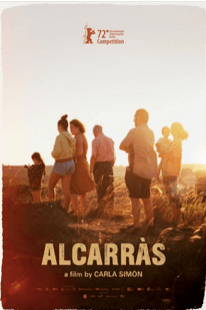 Alcarràs
Alcarràs
New World View: Spain
The flagship of the New World View section of this year’s ZFF that focuses on Spanish cinema, Alcarràs won the Golden Bear when it premiered at the Berlin Film Festival earlier this year. It is the sophomore feature by Carla Simón (Summer 1993), and it takes its name from the real-life rural village in Catalonia where the director grew up. The film tells the story of the fictional Solé family, who are peach farmers living in Alcarràs. One day, the owner of their land informs them of his intention to replace the peach orchard with solar panels after the next harvest, leaving the Solé family to decide whether they want to stay and become solar panel operators instead of farmers, or whether they want to leave the place where they spent their entire lives.
Cast entirely with non-professional actors from the area who were chosen from over 9,000 auditions, Alcarràs is a slice-of-life film. Its most successful aspect is how it depicts daily life on a peach farm, and the actors bring a lot of authenticity to their roles. However, the film could have been more tightly constructed narratively. Given the size of the Solé family, it takes a while to get to know everybody and to understand how they are related. Moreover, a lot of the film’s conflicts do not get a proper resolution. Take Quimet Solé, who stubbornly refuses to even consider abandoning farming despite having several ailments due to the demanding physical work on the farm. This places him at loggerheads with his brother Cisco, who is open to the possibility of becoming a solar panel operator and starts to cooperate with the owner of their land. Furthermore, Simón largely abstains from explicitly commenting on the larger issues at play; instead, she matter-of-factly presents the difficulties and the disappearance of traditional farming activities in the modern world, as well as the implementation of solar panels (obviously a result of our increasing need for electricity gained from renewable sources).
While this approach does not make for the most engaging viewing experience, I am still mostly positive about Alcarràs. It contains some powerful moments that stayed with me, and I cared about the Solé family by the end. Furthermore, even though I might have wished for a deeper exploration of the larger issues at play, the fact that Simón leaves it up to the viewer to draw his or her own conclusions ensures that the film lingers on the mind. 3/4 Stars
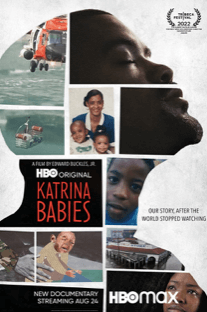 Katrina Babies
Katrina Babies
Documentary Competition
In August 2005, Hurricane Katrina hit New Orleans and caused a major catastrophe. It is widely known that Katrina led to huge flooding, almost 2,000 deaths, and more than $100 billion in damage. Less well-known and largely ignored in the media coverage of the catastrophe is how Katrina impacted people from New Orleans who were children at the time. To shed a light on this, filmmaker Edward Buckles Jr., himself a New Orleans resident who was 13 years old when Katrina hit, started interviewing such people in 2015. What began as a low-key project that Buckles originally intended to release on Youtube for free became Katrina Babies, an intimate documentary feature that premiered at the Tribeca Film Festival in June.
Buckles deftly combines talking head interviews, archival footage, and creative animation depicting events for which no archival footage exists (such as the last time Buckles was at his cousin Tina’s house, where he often used to play with other children from his extended family before Katrina hit–something he fondly remembers and that stands for the many valuable things that were lost due to Katrina). By letting his subjects tell their harrowing stories, he paints a larger portrait that covers not only the initial impact of Katrina, but also how poorly the aftermath was handled by the authorities and how New Orleans’ African American community was left without adequate support. Particularly infuriating is the account of a young woman who, along with several other displaced New Orleans residents, was put in a trailer park with trailers containing toxic levels of formaldehyde, and who was later diagnosed with cancer.
Despite having a runtime of only 79 minutes, Katrina Babies covers a lot of ground. Among other things, Buckles shows how the rebuilding of New Orleans accelerated gentrification and uprooted several African American communities and families. He also draws a direct line between this and today’s high crime rate in the area. Many of the film’s subjects mention that Buckles’ interviews are the first time they are talking about their traumatic experiences regarding Katrina. When Buckles asks them why this is the case, they simply answer that nobody ever asked them before, which underlines how little attention was given to African American children who were impacted by Katrina and its aftermath, and how they had to cope with their trauma by themselves without external support.
Katrina Babies wraps up with a memorable final shot that features a piece of cinematic trickery showing how little is required to make something appear like a home when it is, in fact, far from being such a thing–an apt metaphor for the rebuilding of New Orleans in the aftermath of Katrina. Buckles’ film was already released on HBOMax in the United States, and I highly recommend watching this moving and important documentary. 3.5/4 Stars

David Hill is a lawyer from Switzerland. He has long had a passion for cinema, and he uses most of his spare time to watch and research films. His main interest focuses on arthouse films, and he occasionally makes contributions to Deep Focus Review as a guest writer.
Unlock More from Deep Focus Review
To keep Deep Focus Review independent, I rely on the generous support of readers like you. By joining our Patreon community or making a one-time donation, you’ll help cover site maintenance and research materials so I can focus on creating more movie reviews and critical analysis. Patrons receive early access to reviews and essays, plus a closer connection to a community of fellow film lovers. If you value my work, please consider supporting DFR on Patreon or show your support in other ways.
Thank you for your readership!
Brian Eggert | Critic, Founder
Deep Focus Review




